|
Dear Julie,
Welcome to the Autism Issue of The Healthful
Living Advocate!
At Healthful Living, we are advocates for
supporting the natural health and healing
systems of mind and body.
Nowhere could this be more paramount today
than with the epidemic of autism, as well as
ADD/ADHD, or one of several other
developmental disorders. Collectively, we are
re-learning the influence we have over our
physical health, through the foods we
consume, the stressors we are exposed to, and
how we choose to look at life.
This expanding intuitive and scientifically
discerned knowledge re-empowers our belief in
the ability to heal.
It has been demonstrated that autism is
treatable, and that recovery is possible. We
encourage families to consider biomedical and
nutritional interventions, as well as other
therapies that provide options for children
with autism.
This Autism issue provides new insight about
autism, informative interviews by and with
Julie Matthews, and meaningful articles from
Nourishing Hope friends and colleagues.
PLEASE forward this newsletter to friends,
relatives, and others seeking support for
autism.
Martin and Julie Matthews
| Gut-Brain Connections Help Validate Nourishing Hope for Children by Julie Matthews |
 |

The scientific and medical industry's
increasing attention to and discussion of various
"biomedical" (although they don't use that
term) concepts and interventions for autism
is promising. The media's attention to the
subject is exciting. While there has been a
small group of passionate doctors and
researchers who understand the connection
between the body's biochemistry and autism
for years (particularly ARI and DAN!),
they did not get much "mainstream" attention
until recently. Parents would find these
doctors only through referrals
from other parents. We have Jenny McCarthy
to thank for sharing her heartfelt story, and
explaining the gut-brain connection to
millions of people using language a child can
understand.
Now, journalists and
program hosts are interviewing doctors like Jerry
Kartzinel and Kenneth Bock. News agencies
are running stories on autism and
diet - speaking to researchers and doctors like
Martha Herbert and talking about scientific
connections. Even a Senator (and presidential
candidate) is declaring the need for help for
autism.
Researchers and clinicians are discovering
and talking about:
- The gut-brain connection
- Scientific basis for dietary
intervention
- Cellular changes consistent with immune
activation in the same areas where white
matter enlargement was found in the brain
- Calcium channel abnormalities
- Methylation insufficiencies
Why is this so important?
It shifts the entire premise of autism from
solely
a brain disorder (limited perspective) to a
whole-body disorder (broader perspective).
It also changes it from a fixed genetic
disorder to the notion of autism as an acquired
disorder - considering the role of environmental
influences. This understanding and
perspective expands the opportunities for
intervention significantly.
If autism is seen as a brain
and psychiatric condition, only drugs and
behavior
modification are the primary interventions.
However, if autism is seen as a biochemical
imbalance
that effects various systems including the
gut affecting digestion, the immune system
affecting inflammation, and the brain
affecting cognition, behavior, and emotions,
there is now something that can done to treat
these symptoms. By
better understanding the systemic connections
with autism, we can support each child's
opportunity for recovery and a healthy and
happy life.
What can you do?
Eliminate foods that are not
tolerated and may directly affect
neurotransmitter balance - wheat and
dairy and additives including MSG are
essential places to start. Introduce
healthy foods that support digestion and
supply valuable nourishment is a powerful
area parents have control. Adding nutrients
that are essential to brain function and
biochemical pathways is an area of
importance that can help children. I discuss
all of this in detail in Nourishing
Hope where I present the
scientific
rationale for nutrition intervention for
autism and provide a comprehensive holistic
approach to implementation.
Here are some ESSENTIALS for Parents,
Relatives, Caregivers
and other's who face naysayers of diet,
biomedical, or alternative therapies for autism:
- Spend time at Autism.com reviewing
research, videos, parents' real experiences
- Tune into the POSITIVE media coverage for
Jenny McCarthy, Dr. Kartzinel, Dr. Bock, and
others who are speaking truth about autism
being treatable and recovery being possible
- Connect with online support groups like
Yahoo, for biomedical and diets
- Listen to Dr. Herbert's interview on CBC
News (send to others) and read her
website
- Read Is
the Cure for Brain Disorders Outside the
Brain? in the Alternative
Therapies in Health and Medicine Journal
- Pick up the Autism Journey Guide
from TACA and diet
specific books by Lisa Lewis, Elaine
Gottschall, and Jaquelyn McCandless,
available at Autism.com
- Be enthused by the exciting new Autism
Collaboration's "Parents as Partners"
Research Initiative
- Inform your primary care clinician -
provide them a copy of ARI's Effective
Biomedical Treatments and copy of Nourishing
Hope: Nutrition Intervention for Autism
Spectrum Disorders
The more researchers and clinicians work
together and are open minded about ideas from
passionate parents, the
faster and better we can help these children.
As a Nutrition Consultant
specializing in ASDs, I understand and have
witnessed the positive impact that nutrition
and diet can have - and am frustrated when
facing those who do not see, or will not
believe that something right in their hands
could make a difference. Reality is stronger
than denial however, and parents' passion for
answers, I feel, will ultimately affect
change from a
system that hasn't provided needed help.
There is hope, children are recovering.
I wish for this trend to continue - that more
pediatricians, teachers, therapists,
researchers, aid workers, etc., learn and
realize that there are options, that there is
something they can do, that
they do not have to accept unfounded and
hopeless prognoses for
their children. May we soon see schools,
businesses, and governmental institutions
eliminating offensive foods from their menus
and offering REAL foods instead. May more
parents and grandparents become involved in
cooking and eating healthfully together as
families - traditional foods heal. May our
insurance
institutions reimburse families for the cost
of therapies that make sense and can help.
To this promise for the future I remain committed
to nourishing hope.
|
| PRESS RELEASE from Healthful Living |
 |
|
Science helps validate
special diets for Autism, hope may be right
in parents' hands
New scientific data and
opinion supports nutrition and dietary
intervention as helpful for those with
autism. Newly updated book by Autism diet
expert, Nourishing Hope, explains the
scientific rationale for applying special
diets.
San Francisco, CA (PRWEB) November 27,
2007 - For every one in 150 children
diagnosed with autism, traditional thinking
recommends only behavior and communication
therapies and medicines to control symptoms.
Julie Matthews, Certified Nutrition
Consultant and author of Nourishing Hope,
knows that something is missing. Treatment
options have been limited due to a narrow
perspective of autism as strictly a brain, or
'psychiatric' disorder. "Fortunately, science
is now rethinking autism and new data
supports the notion that special diets can
help," Julie says.
Scientists from the University of Western
Ontario recently linked a compound produced
in the digestive system (also found in wheat
and dairy products) to autistic type
behavior, which may demonstrate that what
autistic children eat could alter their brain
function. Commenting on the study, Dr.
Martha Herbert, Assistant Professor in
Neurology at Harvard Medical School, recently
told CBC News in Canada, "Now we're learning
that the brain and body can influence each
other. There are chemicals produced by and
influenced by foods that can affect the
brain." If you remove those foods, that
negative impact can stop.
The new edition of Julie's book, Nourishing
Hope, highlights recent research in
biochemistry and nutrition for autism, and
explains the scientific rationale for dietary
intervention to help restore health. Doctors
and researchers are now recognizing what
nutrition experts like Julie have known for
years, that the brain is "downstream" from
the body's biochemistry, and not the sole
origin of the problems seen with autism.
Indeed, the editor-in-chief of the
peer-reviewed journal Alternative Therapies
in Health and Medicine, Mark A. Hyman, M.D.,
posits a new "systemic way of thinking" about
autism in his current editorial, Is The Cure
For Brain Disorders Outside The Brain? He
states that nutritional deficiencies or
imbalances can explain some symptoms of
autism and that "the body's influence on the
brain must come to the forefront of research
and treatment."
To help with autism, Julie recommends
avoiding gluten and casein (wheat and dairy)
because these foods are known to affect a
brain response similar to morphine leading to
foggy thinking and food cravings in children.
Next, she suggests introducing foods that
are easy to digest, rich in good bacteria,
and packed with nutrients such as homemade
broths, naturally fermented foods, and pureed
vegetables hidden in meatballs, as well as
supplements such as cod liver oil, probiotics
(good bacteria), B6, magnesium, and zinc.
Children with autism tend to have very
limited diets, so the idea of removing wheat
and dairy can initially seem challenging to
some parents: however, Julie provides
encouragement by explaining, "Once you remove
the problematic foods that can be addictive,
children often expand their diet
tremendously." Thousands of parents who've
applied nutrition intervention attest that
what they feed their kids clearly makes a
difference.
Since parents determine children's diets,
this major key to autism is literally in
their hands.
Julie Matthews is a Certified Nutrition
Consultant specializing in autism spectrum
disorders. She speaks at national autism
conferences, and leads cooking demonstrations
on traditional healing foods. Julie has a
private nutrition practice and weekly radio
show in San Francisco and assists families
from around the world.
For more information visit
NourishingHope.com
LINK
to PRWEB Press Release.
|
| GFCF Tips from Sueson Vess |
 |
|
Sueson Vess is a Professional Chef who has
celiac disease and cannot consume gluten.
She has become an expert at preparing gluten
free and other foods requiring particular
dietary restriction. Sueson's written a
cookbook, prepared instructional videos, runs
a support group for those on the GFCF Diet,
and is a frequent speaker/guest chef at
conferences across the country. At the Autism
One Conference, Sueson, Betsy Hicks, and
Julie Matthews present a day long cooking
education and demonstration for parents of
children with autism. SEE VIDEOS OF THE
COOKING DAY HERE
Equipping the GFCF
Kitchen
Pantry basics
Flour: Stock two GFCF flour blends;
one with xanthan gum or guar gum and another
without any gum. Use the blend containing
xanthan gum for baking and pancakes. Use the
other flour for breading meat, thickening
soups and gravies. Authentic Foods (authenticfoods.com)
makes Multi Blend Gluten Free Flour with
xanthan gum. Bob's Red Mill (bobsredmill.com)
makes Gluten Free Flour Blend (without
zanthan) or make your own from recipes found
in Special Eats Gluten-Free and Dairy-Free
Cooking by Sueson Louise Vess (specialeats.com),
Cooking Free by Carol Fenster (savorypalate.com),
Cooking Gluten-Free! by Karen Robertson, or
Gluten Free Baking by Rebecca Reilly.
Sweeteners: Non-cane sugar
alternatives include agave syrup, honey and
maple sugar or syrup. Use in place of cane
sugars.
Fats: Stock healthy fats (all
non-hydrogenated) for cooking and baking.
Grape seed oil has a mild flavor and high
smoke point and is good for sautéing and
baking. Olive oil is a better butter
replacement on vegetables. Coconut oil is
good for baking and spreading. Ghee
(clarified butter) is considered casein-free
and may be used in moderation in cooking.
Coconut and palm oils are also good for frying.
Whole foods: Purchase organic or non-GMO
produce, free-range poultry, organic, uncaged
eggs, grass-fed beef, wild-caught fish.
Whole grains: Stock up on rice (brown,
white, black, red and wild) and other GFCF
grains like quinoa, millet and amaranth.
Quinoa and amaranth are ancient grains high
in protein, fiber and taste. Use these grains
in place of couscous or pasta.
Gluten-free pasta: There are many
good-tasting GFCF pastas. Tinkyada brand is
widely available, tastes good and is made
from brown rice. Do not overcook GFCF pasta.
Non-dairy milk: Almond, rice, hemp and
coconut milks are useful in GFCF cooking and
baking. Use them in place of dairy. Almond,
rice and hemp milks are thinner so use
slightly less (you can always add more).
Nuts and seeds: Purchase raw
(unsalted) preferably organic nuts and seeds
for making trail mixes, homemade granola, for
baking and snacking.
Equipment
basics
The following
equipment will simplify and enhance GFCF cooking:
- Good sharp knives and a knife sharpener
- Blender
- Food processor
- Cookware: stainless steel, cast iron,
stoneware or glass (do not use aluminum or
nonstick cookware)
How to Begin Following the GFCF
Diet
|
|
Remove:
|
REPLACE
WITH:
|
|
Week
1
|
Step
1
All
gluten and dairy containing
snack foods
|
Healthy
snacks like homemade trail mix, GFCF
granola bars, fresh fruit and veggies,
fruit leather (pure
fruit).
Make
it
fun. Cut food into shapes or small
bite-sized pieces, use acceptable dips.
May use crunchy GFCF chips and GFCF
pretzels.
|
|
Week
2
|
Step
2
Processed
foods
|
Nutrient-rich
whole foods. Your children will not starve.
If they are eating only processed
foods they are already under-nourished.
Keep foods simple and nutritious.
|
|
Week
3
|
Step
3
Sweetened
beverages, juices, soda,
dairy
|
Water,
naturally sweetened drinks and non-dairy
alternatives. START SLOW! Blend
cow's milk with non-dairy milk and
gradually increase non-dairy and decrease
dairy; dilute juices with water the same
way.
|
|
Week
4
|
Step
4
Dairy
(including casein) from
diet. Maintain this diet for a minimum of
one week before making more
changes.
|
Keep
gluten in the diet while your child adjusts
to dairy-free foods. Keep foods
simple. Find foods that your child enjoys
eating.
|
|
Week
5
|
Step
5
Gluten
and dairy from diet.
|
Prepare
simple GFCF meals that are within your
child's texture needs. (See menu for
suggestions).
May
use
GFCF mixes for cookies, and treats adding
nutritious foods like pureed
squash, shredded carrots and zucchini. See
resources.
|
|
Week
6
|
Step
6
Gluten
and dairy from diet plus
eliminate soy, corn and remove or greatly
reduce sugar.
|
Homemade
GFCF meals and snacks with healthy whole
foods. Use natural alternative
sweeteners to replace sugar. Do not use
artificial sweeteners. Save treats
for special occasions rather than
daily.
|
|
Week
7
|
Step
7
Artificial
colors and additives
like MSG, nitrates, nitrites, other
toxins
|
Unprocessed,
organic fruits, vegetables, GF grains,
meats and fish. Read labels carefully.
Read "Excitotoxins – the Taste that
Kills" by Russell Blaylock.
|
|
1
day at a time
|
Step
8
Fear
|
Gratitude
and confidence – continue to seek
support from others as you make these
changes.
|
|
|
|
|
Making gradual changes is key to
sustainable success. Read Sueson's article,
"The Family Table" in
an earlier
newsletter. VISIT
Sueson's website for more information
including recipes and meal planning.
|
| Out of Autism by Raun Kaufman |
 |
|
Autism spectrum disorders are on the rise. A
condition that once touched less than 1 in
10,000 children in the United States today
affects 1 in 150. Unfortunately, most parents
of children receiving an autism diagnosis are
told that their child's condition is an
irreversible, lifelong affliction, leaving
many parents devastated, with little or no
hope for their children's future improvement
or recovery. More than 30 years ago, my
parents, too, had a son diagnosed with this
disorder: me.
At 18 months, I was diagnosed as severely
autistic, with a tested I.Q. of less than 30.
I would spend my days endlessly engaged in
repetitive behaviors such as spinning plates,
rocking back and forth, and flapping my hands
in front of my face. I didn't want to be
touched, I never looked at other people, and
I did not give the slightest response to the
calls and requests of the people around me.
I was "in my own world."
My parents were told to expect no change in
my development. I would never speak, never
have friends, never go to school, never learn
to communicate with others in any meaningful
way. The professionals recommended eventual
institutionalization.
My parents, however, decided to make a
complete departure from traditional methods
of "treatment." They designed and
implemented an innovative and groundbreaking
program that was both home-based and
child-centered: The Son-Rise Program®.
After working with me for over three years,
my parents achieved what the experts had
deemed "impossible": I recovered completely
from my autism without any trace of my former
condition. After living a normal childhood,
then earning a degree in Biomedical Ethics
from Brown University, I went on to direct an
educational center for school-aged children.
I now lecture internationally, as well as
being the CEO of the Autism Treatment Center
of America.
Thankfully, parents today do not have to face
the lack of support that my parents faced,
nor do they have to settle for a prognosis of
hopelessness. After my recovery, my father,
Barry Neil Kaufman, wrote a book relating our
story entitled Son-Rise: The Miracle
Continues (later the subject of an NBC
television movie). Then, in 1983, my parents
founded what is now known as The Autism
Treatment Center of America, located in
Sheffield, Massachusetts. This non-profit,
charitable organization is dedicated to
helping parents and professionals caring for
children with autism, PDD, autism spectrum
disorders, and other related developmental
challenges. We teach a system of treatment
and education designed to help families and
caregivers enable their children to
dramatically improve in all areas of
learning, development, communication, and
skill acquisition. Having worked with
thousands of people worldwide, we continue to
see results that have forever changed the
face of autism and other developmental
disorders.
The foundation of the program rests upon this
idea: the children show us the way in, and
then we show them the way out. In this way,
we establish a mutual connection and
relationship, which is the platform for all
education and growth. Then, we can teach our
children everything we want them to learn
with exponentially greater success, speed,
and ease.
One specific technique derived from this
principle is joining. This means that when a
child is doing a particular repetitive,
exclusive behavior (i.e. stacking blocks,
flapping hands, etc.), we do not try to stop
the child from doing this. On the contrary,
we do this activity with him! This unlocks
the door to the child's world.
Another key technique is to facilitate skill
acquisition by capitalizing on each child's
own motivation. Since, for these children,
traditional learning modalities will rarely
be appealing, we customize the presentation
of curriculum to match the child's highest
areas of motivation. This way, we use the
learning skills and interests our child
already has instead of trying to "run against
the wind" by teaching in a way that doesn't
work for our child.
After decades of helping people with autism
before it was "cool," before anyone cared, we
am excited to see that research is finally
beginning to catch up principles, like those
above, that were previously dismissed. But,
as a society, we still have some distance to
travel on one front in particular: our
denigration of hope and our penchant for dire
predictions.
I am still sometimes accused us of advocating
"false hope." Some assert that I cannot
guarantee that all children will turn out
like me. This is true. No one can guarantee
that. But does this mean that parents should
be discouraged from hoping for their
children? Does anyone really believe that
our children are better of with a life
sentence than an open door and an
outstretched hand?
When I was diagnosed with severe autism, my
parents decided to see possibilities where
others saw none, and it was this perspective
that enabled my complete recovery. I don't
believe anyone should ever have to apologize
for giving their child a chance. Hope leads
to action, and without action, none of our
children can be helped.
Raun Kaufman is CEO of The Option
Institute and The
Autism Treatment Center of America.
LISTEN
TO JULIE'S recent interview with Raun.
|
| Food Fear Factor by Betsy Hicks |
 |
|
I grew up in a family of seven children (five
of them being football playing boys). When I
think back of how my mother used to feed us
all, I remember certain tricks that she had.
Meat was rationed, bread was a staple, and
no one was allowed to be picky. I can still
remember having to sit at the table, after
the dishes were done, because I wouldn't
finish something on my plate, and finally
when my favorite TV show was on and I was
desperate to escape, I would close my eyes
and gag it down. My husband's memories are
the gratitude of having something to eat.
Working up a ferocious appetite on a farm all
day as a young boy into his teens, he would
have never dreamed of telling his mom, "I
don't want this, make me something else".
The new generation of children will tell
different stories. They will say, "And then
mom came home with Mountain Dew--PLAIN
Mountain Dew, can you believe it? I told my
mom, 'march right back to that store and get
me the RED kind, because this simply won't
do'." Maybe that sounds extreme, but
Americans are so spoiled by year round
produce and eternal shelf life products that
we have lost appreciation for food.
This fall, my husband and I decided to take a
trip to Thailand. Why Thailand? For
beaches, affordability, but mostly food. How
excited to be in a country where gluten and
dairy were only imported and the norm was
fresh, organic, and flavorful. I dreamed of
the street vendors and walking with my
husband, tasting a little something here and
there and expecting nothing less than to be
deliciously dazzled. After all, I am NOT a
picky eater so the idea of trying new food is
a joy.
Our first walk through the streets of
Thailand triggered a host of smells, somewhat
like a mix of an outdoor BBQ, a can of tuna,
and two week old garbage. I saw parts of
fish I didn't know existed and textures that
frightened me. The more I saw, the more I
became paranoid. In a very nice restaurant
in Bangkok I saw snake on the menu. I
ordered a Thai roll that claimed to have a
surprise. My conversation with the waiter
went something like this, "I'd like the Thai
roll please, but what's the surprise?" I asked.
"I'm not sure, madam." He answered.
"It's not snake is it?" I said.
"No, it's not snake." He said.
"Is it anything that any American would be
afraid of?" I persisted.
"I don't know, what are you afraid of?" he
questioned.
"Pretty much snake and anything that is not
viewed from the outside of a fish." I said.
"You will be fine", he replied
And fine I was; it was delicious.
Two days later I was eating a bowl of soup in
a Japanese restaurant on my way home through
Tokyo. I bit into something and gagged. I
was sure it was an eyeball of something.
After further inspection I discovered it was
a mushroom. However, if it HAD been an
eyeball, I would have held out for days
without food in order to not revisit that
texture, even though the taste was bland.
I thought about all of the children I have
worked with over the years. Why was my fear
of food in Asia so heightened? Why was I
afraid to even try anything that I didn't
know what all of the ingredients were? In
most of the cases it was more about texture
than it was about taste. Our mouths get used
to the way certain foods feel. They
gravitate for familiarity. When a new
texture is put in a place that it normally
doesn't visit, it's like telling your kids
you're going to Disney World and "surprising"
them at the last minute and telling them
you're going to Washington DC.
Now the parent may say (and I hope they do),
"but even though they like the comfort of
macaroni and cheese, I need to make them eat
vegetables." So, don't go to Washington DC.
Instead take them to Disney World and make
them go to the Hall of Presidents. It only
lasts a half an hour and they still get what
they want. The analogy I'm stretching for is
meeting your kids half way. Here is the
conversation I would have had with my
daughter about the Japanese soup.
"Agh, there's an eyeball in my soup," she'd gasp.
"Honey there is not eyeball in your soup,"
I'd calmly say.
"Oh yeah, then what do you call THIS?" as
she'd fished out the slimy round thing.
"It's a mushroom. You like mushrooms," I'd
reassure.
"I like mushrooms where mushrooms are
supposed to be and when mushrooms taste like
mushrooms--this tastes like an eyeball." she
would persist.
Now for those of you identifying with this
story, where did I make my first mistake?
The first mistake was that I left way too
much to imagination. This is a tough call
for parents, because I do endorse sneaking in
vegetables in many foods, but only when the
texture has been modified (such as pureed).
Knowing that my daughter likes mushrooms, I
could have inspected the soup with her in
advance and helped her prepare her mouth for
what was going to be swimming in it. Most
kids do fine with pureed vegetables because
they don't change the texture, but if you
want your child to eat bok choy, then start
by shopping for it together. Show your child
before you cook it what it looks like. Have
them taste a little bit raw and cut it into
small enough pieces that they are not
overwhelmed.
Adults and children can change their habits.
We all need to broaden our menu repertoire.
This week when you are shopping, buy
something in the produce department that you
have never tried before. Gradually work
your way into new spices, herbs, fruits,
vegetables and meat. No criticism from me,
however, if you leave out the reptiles.
Betsy Hicks is an author, diet counselor,
and the mother of a son with autism. She and
her husband, Dr. John Hicks, operate Pathways
Medical and Holistic Health Advocates.
|
| Julie in Toronto - PRESS RELEASE |
 |

Julie Matthews
to Speak to Parents and
Professionals in Toronto.
Free workshop about the benefits of Diet &
Nutrition for Autism Spectrum Disorder
Children
Over 300 Parents and professionals are
scheduled to attend a Parents Listen Speaker
Event in Toronto, on Saturday December 1st,
from 10:00 AM- 3:00 PM, at Ryerson
University, 55 Dundas Street
West.
With 1 in 150 children
being diagnosed with autism and
mainstream channels offering little or no
immediately helpful treatment options, local
parents are taking matters into their own
hands. Certified Nutrition Consultant and
Autism expert Julie Matthews will speak in
Canada for the first time to parents and
professionals about the significant impact of
diet on children with Autism Spectrum
Disorders. Attendees will learn why proper
nutrition is essential for these children,
various autism diet options, and the "when,"
"why," and "how" to get started with
implementation. Dietary intervention can
affect dramatic improvements in children's
behaviours and the scientific community is
increasingly validating this approach. This
workshop will include a presentation, food
preparation demonstration, and several
opportunities for interactive questions and
answers for people wanting to begin, refine,
or deepen their knowledge of dietary
interventions. Matthews' Toronto appearance
is sponsored by Parents Listen, a local
parent led organization. Parents Listen
events focus on empowering parents to direct
their own child's recovery by expanding their
knowledge of safe and effective treatment
options.
Julie Matthews speaks at various
conferences
throughout the United States including Defeat
Autism Now!
and Autism
One. She is the Author of
Nourishing Hope, a comprehensive guide to the
specific and unique biochemistry of autistic
spectrum disorder children. She is a
Certified Nutrition Consultant with a
practice in San Francisco where she consults
with families and practitioners from around
the world. She is the host of two radio
programs and teaches classes on ASD diets
including GFCF, SCD, Body Ecology, Feingold,
low oxalate, and more.
Parents Listen was created by Michael and
Kelli Pallett, parents of Jordyn, a 4yr old
boy diagnosed on the Autistic Spectrum at 2
years old. While languishing on waiting
lists for two years, with no expectations of
help from the Ontario government, they
started looking elsewhere for options, and
discovered that a wealth of opportunities
were available that parents could implement
right away - and that can have immediate
benefit. Kelli and Michael created Parents
Listen, a free speaker series where experts
with extensive first hand experience with
autistic children come to Toronto and speak
to parents and professionals. Topics focus
on effective support and treatment options
for autistic children that parents may
otherwise be unaware of. The speaker format
gives parents the opportunity to listen, but
also ask questions and interact directly with
experts and other parents who have
successfully employed the methods discussed,
so they can best determine what's right for
their child. "It is amazing to me," Michael
Pallett said,
"that after receiving a diagnosis that your
child is autistic, the primary support
offered to these parents is simply a place on
a waiting list. There is nowhere that parents
are directed while they wait, that offers
anything concrete to do in the home which can
impact their children right away. But we
have found that there are many things parents
can do, that can have immediate positive
results for their kids."
Autism is not a disease, rather a
little-understood disorder that affects the
brain in an astounding 1 in 150 children in
Canada ; a rate which has increased by more
than 10 times in the last decade. While the
cause of autism is unknown, many researchers
believe it is a combination of genetics and
environmental factors, including viruses,
chemicals, over use of antibiotics, and heavy
metals including lead and mercury.
Parents of children newly diagnosed with
Autism Spectrum Disorders have had limited
access to therapeutic services, and financial
supports, offered by the government of
Ontario. While the government has recognized
the need for these services, due to various
court cases and funding controversies, the
waiting lists for children in need have grown
longer and longer. Meanwhile, the stress and
financial burden on these families is severe,
noted by a rate of divorce reported at 80%
for families of children on the Autism
Spectrum [stat: Autism Speaks and Autism
Society of America].
To arrange for Interviews or Media Passes to
the event, please contact Michael Pallett at
(905) 302-3750. For more information on
Parents Listen contact http://ParentsListen.org
LISTEN
to Julie and Martin talking about the
upcoming Toronto event on Reality Sandwich
Radio (5 mins).
|
| About Nourishing Hope |
 |
|
Nourishing
Hope - book
by Julie Matthews, Certified Nutrition
Consultant
Nutrition Intervention
for Autism
Spectrum Disorders
Why Diet Can Help and a
Holistic Approach to Implementation
NEW
Updated & Expanded EDITION -
October 2007
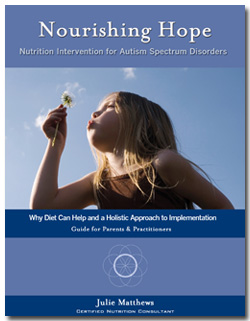
Click to see
front & back cover
|
Nourishing
Hope is a compendium of seven
years clinical nutrition experience
and intense research. It outlines
all of the major autism diets
including GFCF,
SCD, Body Ecology, Feingold, Low Oxalate
Diet, Weston A. Price, and more. The
book provides a comprehensive
understanding of malfunctioning metabolic
processes and explains the impact of
nutrition on the biochemistry of children
with autism. Detailed steps for dietary
intervention are included and a roadmap for
getting started, evolving, and
customizing the varied approaches. The book
contains practical insight garnered through
parents’ anecdotal experience with
nutrition & diet intervention - even for
picky eaters!
Nourishing Hope contains:
- The role of genetics and environmental
toxins
- The impact of nutrients on biochemistry
and healing
- The most beneficial dietary options for
autism
- A holistic nutrition approach to
determining and evolving a diet
|
"Nourishing Hope by Julie
Matthews, is
doing just that for parents
of autistic spectrum children. Julie
joins a small group of
doctors, researchers and parents who believe
there are reasons to be
hopeful and interventions worth trying.
Nourishing Hope
covers the complex topics of
environmental, biochemical, and nutritional
factors affecting our children
with clear explanations and helpful
suggestions. This is an
important addition to the library of "must
read" books for parents of
autistic spectrum kids and the
doctors who treat
them."
- Lisa Lewis, Ph.D., Author, Special
Diets for Special Kids
“Julie is a gifted
nutritionist. She elucidates the
nuances and biochemical
imbalances involved in ASD with a clear
understanding of how to use
nutrition and natural supplements
to correct these imbalances.
I encourage parents and practitioners
alike to read Nourishing Hope
to gain a comprehensive understanding
of how to optimize the health
and well-being of these truly special
children."
- Elisa Song, M.D., Pediatrician
and DAN! Doctor
"Nourishing Hope is
an excellent resource for both
families with ASD children
and the clinicians treating them.
Julie Matthews has done a
superb job in bringing together vital,
complex information and
distilling it into a single no-nonsense,
easy-to-use guide through
the maze of ASD
interventions, and succeeds in doing just
as it claims: Nourishing
Hope."
- Kara N. Fitzgerald, N.D.,
Department of Science & Education, Metametrix
Clinical Laboratory
"Julie Matthews’
approach to nutrition, diet and supplementation
provides a unique blend of traditional and
holistic approaches. Her mastery of
these is superb and very practical."
- John Hicks, M.D. Medical
Director, Pathways
Medical & Holistic Health
Center
“ Nourishing Hope is
one of the best books written on
dietary interventions for
autism. It approaches treatment completely
unbiased as opposed to
‘it worked for my child so it will
work for yours.’ Julie
appreciates and understands the
differences in the need to
customize.”
- Betsy Hicks, Diet Counselor,
Pathways
Medical & Holistic Health
Center
PREFACE
(from Nourishing
Hope)
Since I
began my professional studies in holistic
nutrition and biochemistry,
I have been particularly fascinated
with nutrition for human development—that
is, nutrition for children. From the
onset, I investigated how artificial
ingredients, low nutrient foods, and
sugars were implicated in a wide
range of newly epidemic disorders in
children, particularly ADHD, type
2 diabetes
(“adult-onset”), heart disease,
and even autism.
Once I discovered that imbalanced
biochemical pathways influence the
symptoms of ADHD and autism and that
food, nutrition, and proper supplementation
can have significant impact on these
disorders, I was drawn to learn
and understand more. There are many
people striving to help these children:
parents, doctors, caregivers,
educators, therapists, advocacy groups,
nutritionists, researchers and
research groups. If all of these people
could better comprehend these factors
and influences, we could use our
collective knowledge to better help
these children and their families.
As I researched important subjects
such as liver function, endocrine
imbalance, the immune system, and
food sensitivities, I would always
ask the question, “How is this
implicated in autism spectrum disorders,
and how do we impact it through
nutritional or supplemental
interventions?”
Nourishing Hope is the culmination
of seven years of research into
and clinical experience with autism
spectrum disorder and the affects
of nutrition, environmental factors,
and biochemical imbalances on these
conditions. In this time, I have
consulted with hundreds with children
on the spectrum, read countless books
and research papers, routinely
attended (and now present at) leading
conferences on the subject, interviewed
leading-edge researchers, and
collaborated with dozens of doctors and
their patients.
My work continues steadfastly. I
consult with parents and physicians
through my office in San Francisco,
and clients across the world by telephone.
I am driven to share what I have
learned and continue to learn. We all
must share what we know so that all
children on the spectrum and their
families may harvest the
life-bringing energies of hope. I believe that
all people are worthy of (and
deserve) hope—it is an inherently
human capacity that, when nourished
always leads to some positive outcome.
|
|
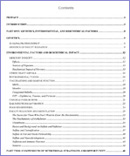
Contents
|
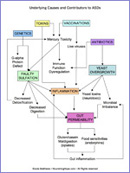
Underlying
Causes
and Contributors to ASDs
|
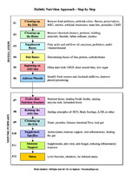
Holistic
Nutrition Approach
|
To order a copy of
Nourishing Hope,
$29.95 (plus $3 shipping),
and for more information
PLEASE
CLICK HERE
|
|
Autism Expert Interviews with Julie Matthews |
|
|
|
Julie was Interviewed by Betsy
Hicks on
Autism One/Voice of America radio.
Betsy is
an author, diet counselor, and the mother of
a son with autism. They talk about varied
diet approaches, recent news about gut-brain
connection, learnings from varied cultures,
tips and suggestions for applying diet and
nutrition, and much more stimulating
conversation between two practiced autism
diet and nutrition specialists.
(11/6/07).
Click
to Listen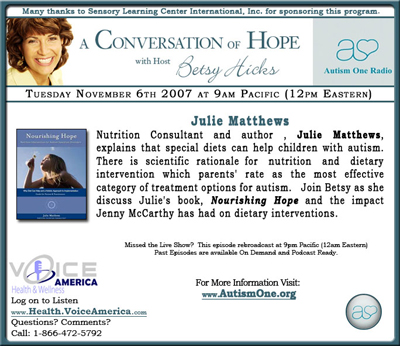
Julie
interviewed Raun
Kaufman on her
San Francisco radio
program about the
Son-Rise program, a totally unique
treatment
for children with autism. Raun inspires
listeners to broaden their perspective and
hope for children with autism and empowers
parents with new options that can have
immediate affect. Julie and Raun discuss the
influence of belief systems, emotions, and
environmental factors that are keys to
maximizing children's potential for recovery
and well being. (11/15/07)
Click
to Listen
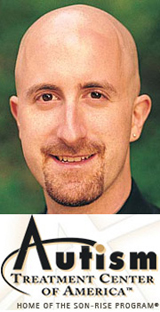
MORE
INTERVIEWS
byJulie
Matthews:
- Kara Fitzgerald: Metametrix Clinical
Laboratory
- Michael Lang: Brainchild Nutritionals
(detox protocol)
- Dr. John Hicks: Pathways Holistic
Medical
Advocates
- Mark Schauss: Crayhon Research
- Devin Houston: Houston
Nutraceuticals
- Liz Lipski: Digestive Wellness for
Children
- Jane Hersey: Why My Child Can't
Behave
- Holistic Autism
Panel Discussion
with 3
DAN! Practitioners: Dr. Elisa Song, Dr. David
Traver, Julie Matthews, NC
- Sally Fallon: Nourishing Traditions
Cookbook (Weston A. Price)
- Susan Senator: Making Peace with
Autism
UPCOMING
INTERVIEWS
by Julie
Matthews
December
6th
Isaac Eliaz
MD, MS, LAc
http://www.dreliaz.com
Pioneer in the field of
integrative medicine, author, lecturer,
researcher, product formulator and clinical
practitioner discusses his autism treatment
approach.
December 13th
Susan Owens, MAIS, RA
http://LowOxalate.info
Noted expert of the Low Oxalate
Diet for autism discusses her new website and
expanded offerings for parents. Julie and
Susan discuss current thinking in dietary
interventions.
Available at
Reality
Sandwich
Radio

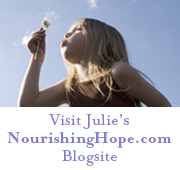

INQUIRE
about a private
nutrition
consultation
with Julie Matthews
WATCH
JULIE'S
PRESENTATION
at the Spring DAN!
Conference. The
autumn conference video and other
presentations from the Anaheim DAN! will soon
be available
here.
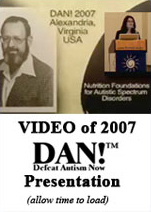
SEE
JULIE'S INTRODUCTION
on Culinary Day
at the
Autism One Conference with Sueson
Vess and Betsy
Hicks.

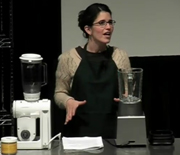
More Autism One videos.
FREE VIDEO
DEMONSTRATION
20 minute excerpt
"Making your own Homemade Sauerkraut,"
from
Julie's hands on
Traditional
Healing Foods
cooking
class
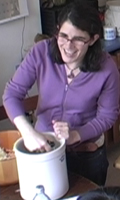

JULIE
RECOMMENDS
soaking nuts and grains for
increased digestibility. 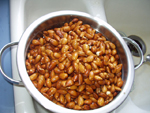
READ
ABOUT soaking nuts in an earlier
newsletter.
READ
ABOUT Julie's Traditional Healing Foods
for children on the autism spectrum COOKING
CLASS
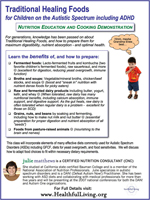
In
October, Julie presented her work with autism
to fellow nutrition colleagues at the
National Association of Nutrition
Professionals annual conference. Interest in
the field of nutrition is growing rapidly as
science and common sense come together. Great
strides in many areas of nutritional
application were highlighted.
 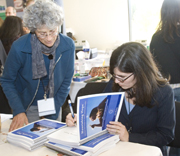
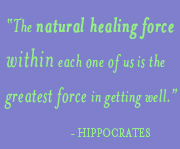
Listen to
an Interview
with Julie
about Nourishing Hope

|
|